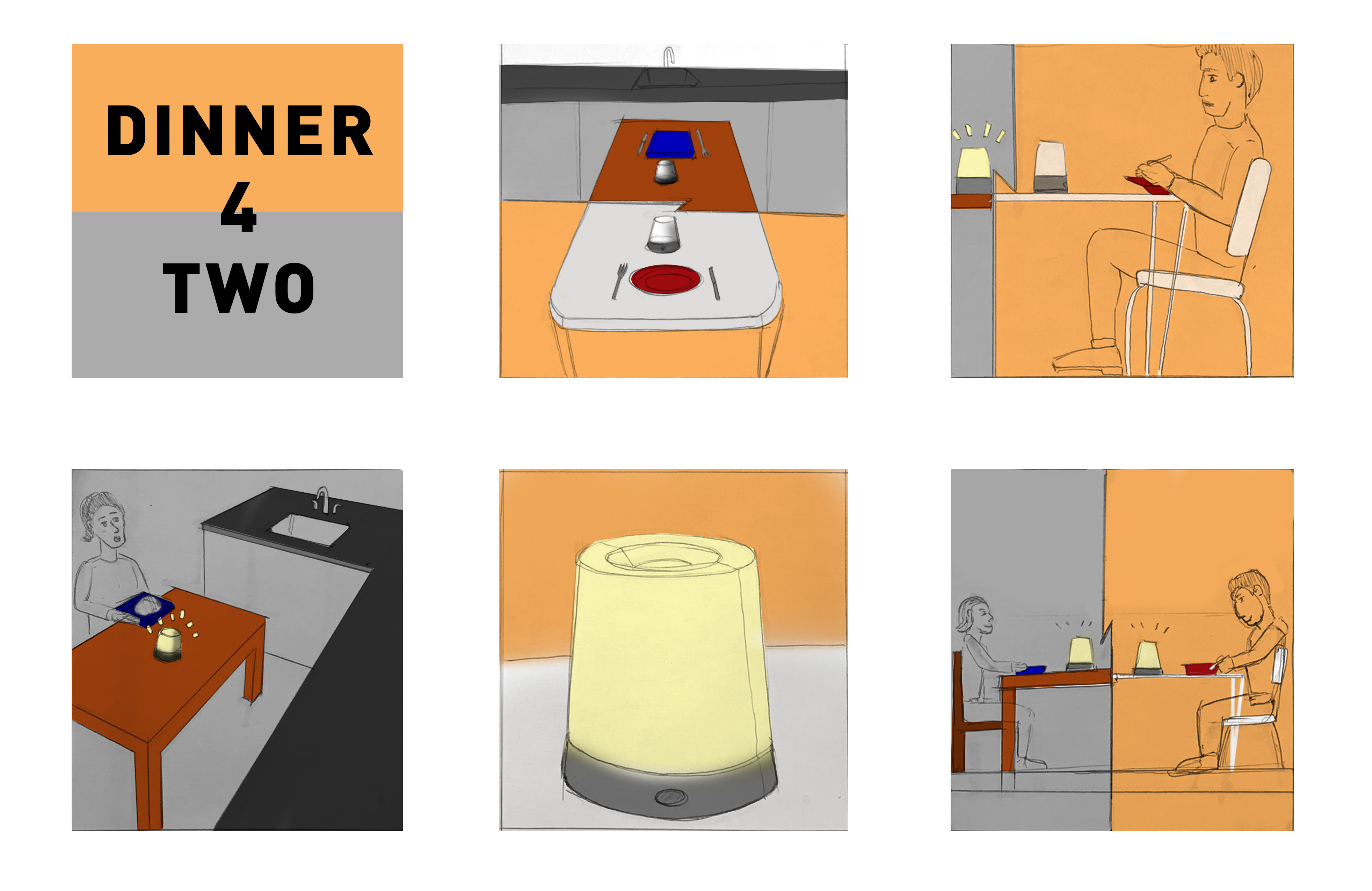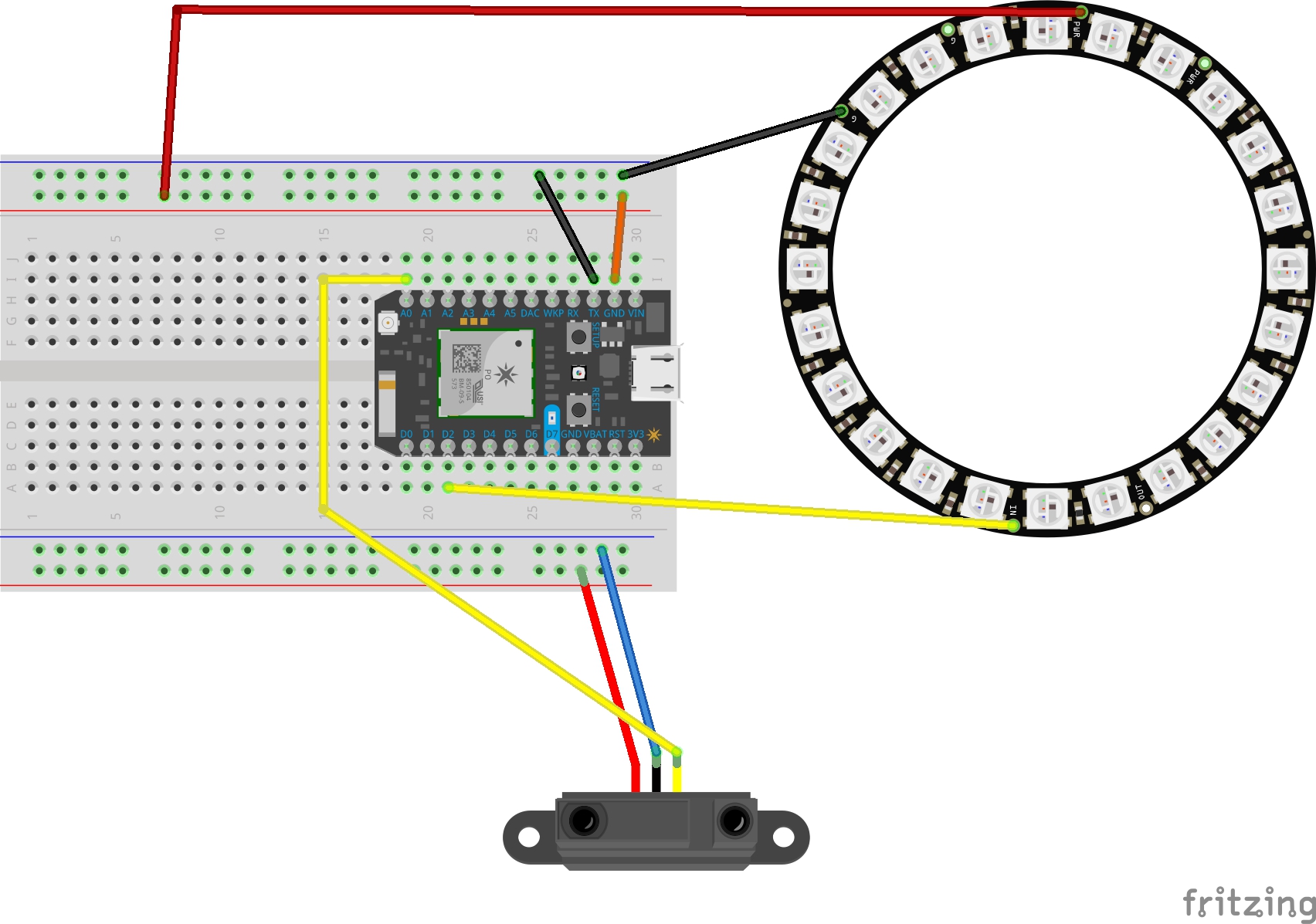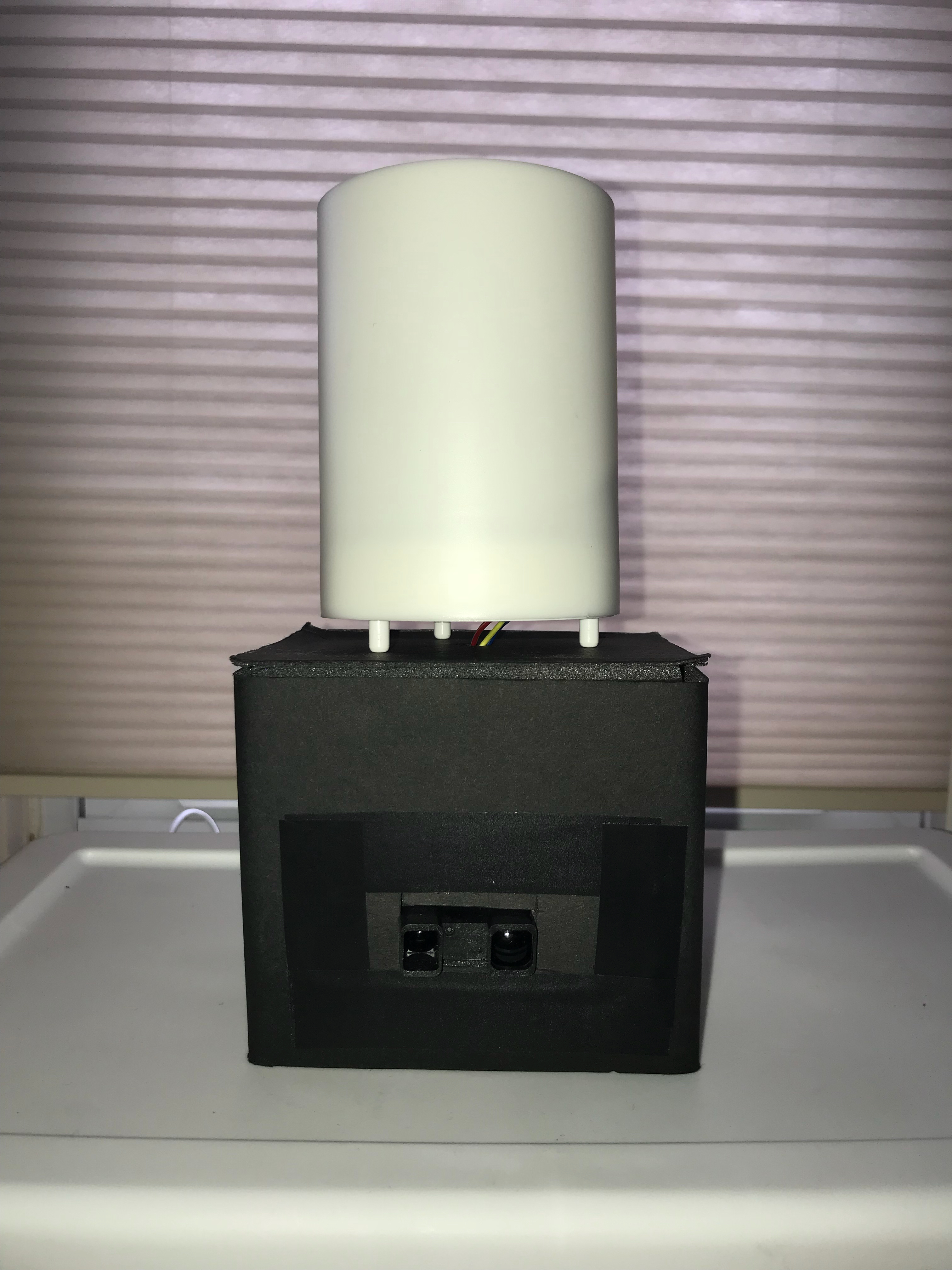Purpose:
Dinner for Two is an exploration of a connect device that promotes intimacy and companionship for couples in a long distance relationship. Dinner is one of the few times a day where couples have the opportunity to unwind from their day and connect with their significant others. Setting aside time for dinner is especially important for the health and success of a relationship. According to a study by a team of Dutch and Canadian psychologists (aan het Rot et al., 2015), the simple act of eating a meal together may be all it takes to bring you and your partner to an emotionally better place
Dinner is an especially lonely and challanging time for couples that are in a long distance relationship and may lead to relationship strain over time. Dinner for Two allows two individuals to have a shared dining experience at a distances, through an interconnected series of candles. Dinner for Two allows couples to have a synchronized date night even though they are in a long distance relationship.



